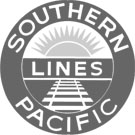Farad
During the later part of the 19th century, mines on the Comstock Lode were inundated by flows of hot water. Initially, steam powered pumps were installed but they proved costly and, combined with a decline in silver prices, were finally shut off in 1886. By the end of the 1890s, hydroelectric power was seen as a solution, and in 1899 the Truckee River General Electric Company was formed. Work began on the new Farad Powerhouse - the first powerhouse on the eastern side of the Sierra Nevada - intended to provide power to not only Virginia City, but fledgling Reno along the way. The name 'Farad' was taken from the measurement of ability to hold an electrical charge. At its completion, the only access to the powerhouse was via a bridge to a siding on the Southern Pacific Railroad, across the river; it wasn't until 1925 when Highway 40 was built through the canyon that it could otherwise be accessed.
After the completion of the Farad Powerhouse, three additional stations were constructed: Verdi (1904), Fleish (1905), and Washoe (1911). For nearly a century, all four continued to operate and provide power for the region, but floods in 1997 destroyed Farad's diversion dam. The powerhouse became idle thereafter, before it was determined to be too costly to make repairs and was ultimately placed up for sale by the Truckee Meadow Water Authority in 2018.

